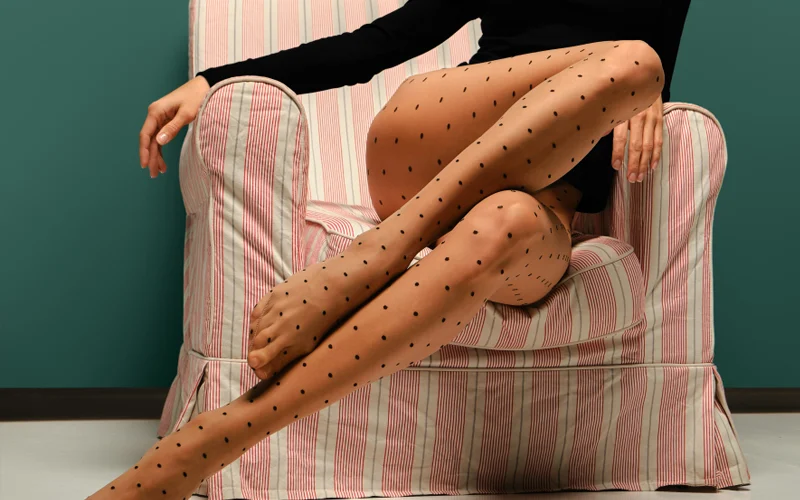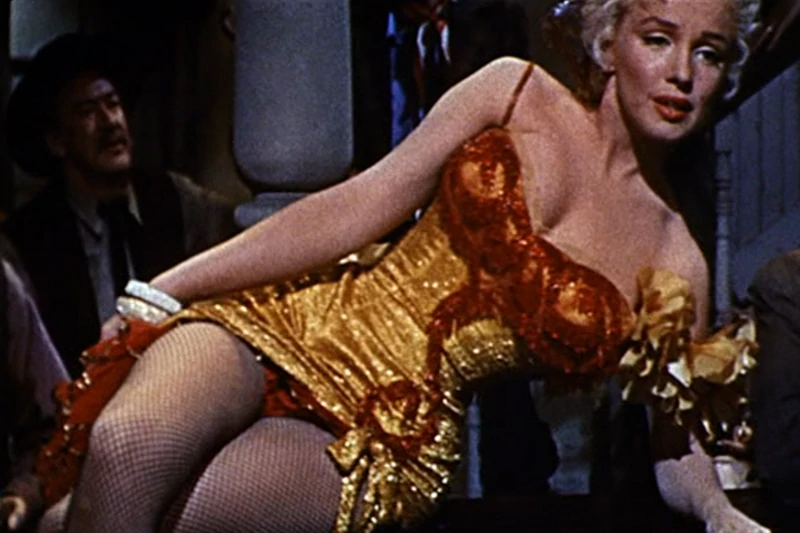From Silk to Synthetic…
Nylon tights, that ubiquitous garment tucked away in drawers and dresser corners, have a surprisingly complex history. More than just a simple piece of clothing, they represent a fascinating confluence of scientific innovation, wartime resourcefulness, and evolving ideas of femininity.

Let’s take a closer look at the journey of this wardrobe staple.
The Pre-Nylon Era: Luxury and Limitations
Before the 20th century, women’s hosiery was primarily made from silk, wool, or cotton.
Silk stockings, though prized for their luxurious sheen and delicate feel, were prohibitively expensive for many women. They were also prone to snags and runs, making them a high-maintenance garment that required careful mending.
Wool and cotton stockings, while more durable, lacked the elegance and sheerness that silk offered. This meant that fashionable legwear remained largely inaccessible to the average woman.
The Dawn of Nylon: A Scientific Breakthrough
In the 1930s, a revolution was brewing in the laboratories of DuPont. Wallace Carothers, a brilliant chemist, was leading research into polymer chemistry, exploring the creation of synthetic fibers.

His dedication and groundbreaking work led to the invention of nylon in 1935. This “miracle fiber” was strong, lightweight, and could be produced in a variety of textures and sheers – perfect for hosiery.
The world had never seen anything quite like it.
Nylon Stockings: A Cultural Phenomenon
The introduction of nylon stockings in 1940 caused a sensation. Women, eager for an affordable and durable alternative to silk, embraced nylon with open arms. Millions of pairs were sold within days, and “nylon riots” were reported as women lined up for blocks, desperate to get their hands on these revolutionary stockings.
Nylon stockings quickly became a symbol of modernity and accessibility in fashion, democratizing a once-exclusive garment.
Wartime Adaptation and Sacrifice
The outbreak of World War II brought a sudden halt to the nylon stocking craze. Nylon, with its strength and versatility, was deemed essential for the war effort. Production shifted to military applications, including parachutes, ropes, and tents.
Women, accustomed to the comfort and style of nylon stockings, were forced to adapt. Leg makeup, or “liquid stockings,” became a popular substitute, and women even patriotically donated their nylon stockings to be repurposed for war materials.
Post-War Glamour and the Pantyhose Revolution
After the war, nylon stockings made a triumphant return, symbolizing the return to normalcy and prosperity. The 1950s saw nylon stockings become synonymous with Hollywood glamour, adorning the legs of icons like Marilyn Monroe and Audrey Hepburn. However, a new revolution was on the horizon.

The 1960s ushered in the era of miniskirts, and with it, the rise of pantyhose (tights). This ingenious invention combined stockings and panties into one garment, offering comfort and convenience for the modern woman.
While pinpointing the very first appearance of nylon stockings in a movie is tricky, here are some early and notable examples:
- 1940s:
- “The Youngest Profession” (1943): This film features a scene where teenage autograph seekers excitedly discuss getting nylon stockings from a movie star. This reflects the craze for nylons at the time.
- “Cover Girl” (1944): Rita Hayworth famously sings “Long Ago (and Far Away)” in this musical, and while not explicitly about nylons, her glamorous costumes and stockings certainly showcase the allure of legwear in that era.
- 1950s:
- “Sabrina” (1954): Audrey Hepburn’s character transforms from a tomboy to a sophisticated young woman, and her stylish wardrobe likely included nylon stockings.
- “Some Like It Hot” (1959): Marilyn Monroe’s iconic performance in this comedy classic features several scenes where her nylon-clad legs are prominently displayed.
It’s worth noting that nylon stockings were often subtly integrated into the costumes of many films from this era, enhancing the overall look of femininity and glamour.
Beyond Hollywood:
- British Pathé Newsreels: These newsreels from the 1940s and 1950s often captured glimpses of everyday life and fashion, including scenes of women wearing nylon stockings. They offer a fascinating window into the social impact of nylon.
Nylon’s Enduring Impact on Fashion
From the initial frenzy of the 1940s to the present day, nylon tights have remained a staple in women’s fashion. They have evolved to encompass a vast array of colors, patterns, and textures, allowing for endless self-expression. From sheer to opaque, fishnet to patterned, there’s a nylon tight for every occasion and every personality.
Nylon tights have not only provided comfort and style but have also played a role in reflecting social changes and empowering women. As fashion continues to evolve, nylon tights remain a testament to innovation, adaptability, and the enduring pursuit of both comfort and style.
Nylon FAQ
What are nylon tights?
Nylon tights, also known as pantyhose, are a type of legwear that covers the body from the waist to the feet. They are typically made from nylon, a synthetic fiber that is strong, lightweight, and sheer.
When were nylon tights invented?
While nylon itself was invented in 1935, nylon stockings first hit the market in 1940. Pantyhose, which combine stockings and panties into one garment, emerged in the 1960s.
Why were nylon tights so revolutionary?
Nylon tights offered several advantages over previous legwear options:
- Durability: Nylon was more resistant to runs and snags compared to silk stockings.
- Affordability: Nylon was cheaper to produce than silk, making fashionable legwear accessible to more women.
- Comfort: Nylon was lightweight and breathable, making it more comfortable to wear.
- Versatility: Nylon could be produced in various colors and sheers, offering more style options.
How did World War II affect nylon tights?
During World War II, nylon production was diverted to military uses, leading to a shortage of nylon stockings. Women resorted to leg makeup or simply went bare-legged.
How did nylon tights impact fashion?
Nylon tights played a significant role in fashion by:
- Democratizing fashion: Making stylish legwear accessible to the masses.
- Enabling new styles: Pantyhose allowed for shorter hemlines and greater freedom of movement.
- Providing self-expression: The variety of colors and patterns in nylon tights allowed women to showcase their personal style.
Are nylon tights still popular today?
Absolutely!!! Nylon tights remain a wardrobe staple for many women. They offer comfort, style, and versatility, and they continue to adapt to modern fashion trends.
How should I care for my nylon tights?
To keep your nylon tights in good condition, it’s best to hand wash them in cold water with a mild detergent. Avoid machine washing or drying, as this can damage the delicate fibers.
Making tights last longer?
- The freezer trick: Surprisingly, freezing new tights before wearing them can make them more resistant to runs!
- Gentle washing: Hand-wash your tights with mild shampoo or hair conditioner for best results.
- Air dry only: Never put tights in the dryer! The heat can damage the delicate fibers.
- Hairspray to the rescue: A quick spritz of hairspray on a small run can help stop it from spreading.
Creative uses for old tights
- Dusting: Old tights make fantastic dusters, especially for delicate items.
- Polishing: Use them to shine your shoes or even your car.
- Cleaning Teflon: Tights are gentle enough to clean Teflon pans without scratching.
- Storing onions: Keep onions fresh longer by storing them in knotted-off sections of old tights.
- Making scented sachets: Fill tights with lavender or other fragrant herbs.
- Protecting plants: Cut up tights to use as gentle ties for supporting plants.


